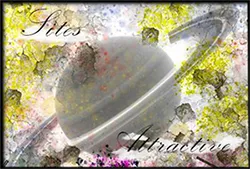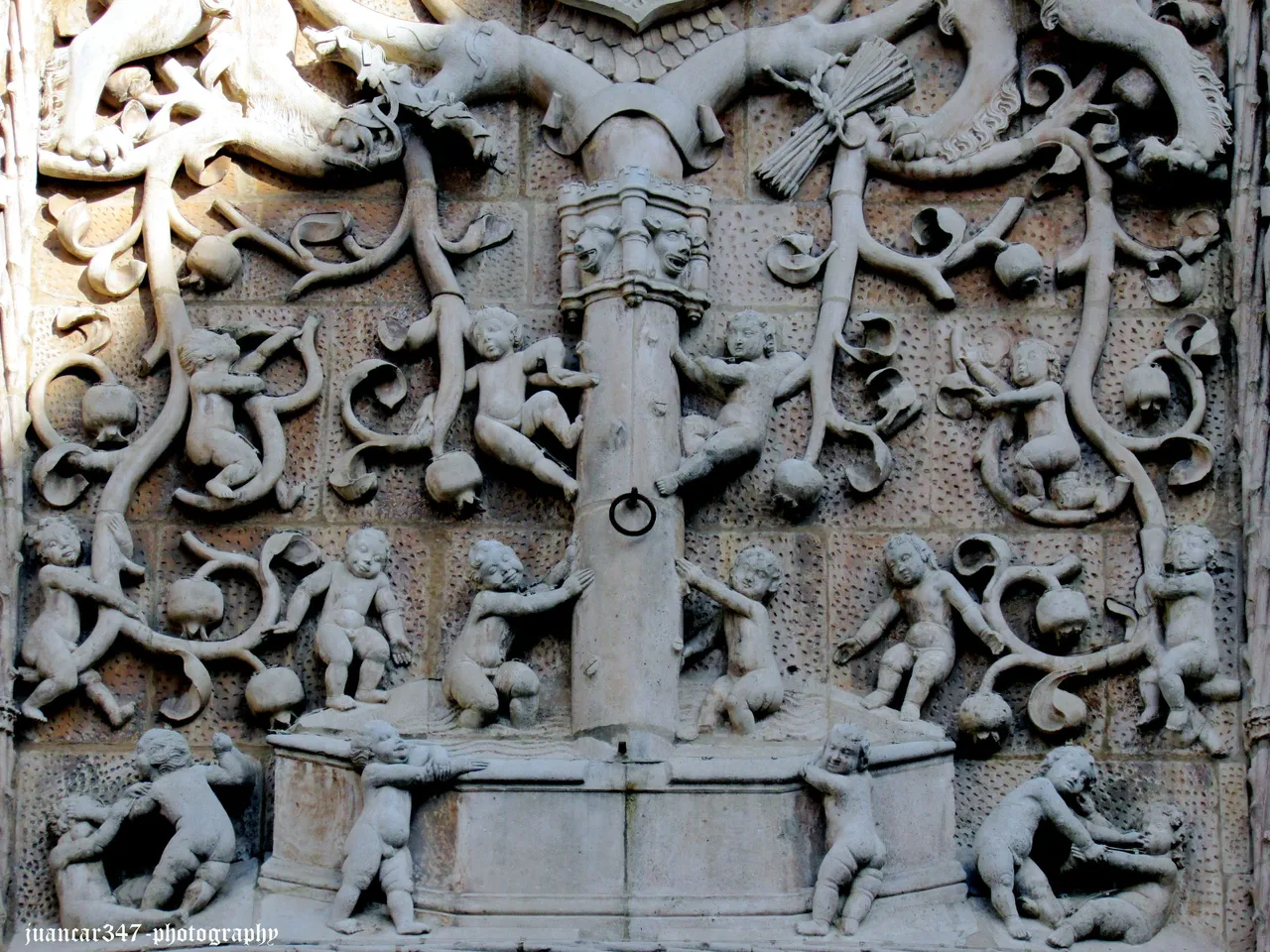
Many times I have imagined, thoughtful in front of these immeasurable covers, that what began as a fantasy of jewelers, ended up leading to an 'architecture of craftsmen', where the minimalist ceased to be a letter of marque for a few, to constitute a macroverse within reach of the contemplation of all.

A worthy forerunner of that 'churrigueresque style' that so displeased one of our most successful poets -unfortunately and as often happens, his merits were recognized after his death- whose name, Gustavo Adolfo Bécquer, possibly feeds the memories of many of you, with your 'Rhymes and Legends', the Elizabethan or Plateresque style -which I already had occasion to introduce to you in part, when I spoke to you about the San Juan de los Reyes monastery in Toledo- marked a milestone in that Spain that had just reconquer its territory, with the taking of Granada and its old shields, began to forge, through the mediation of Christopher Columbus, that Latin oriflamma, Plus Ultra, which showed that the world did not end in the mythical Pillars of Hercules, but that it went far beyond, stretching as far as the horizon.
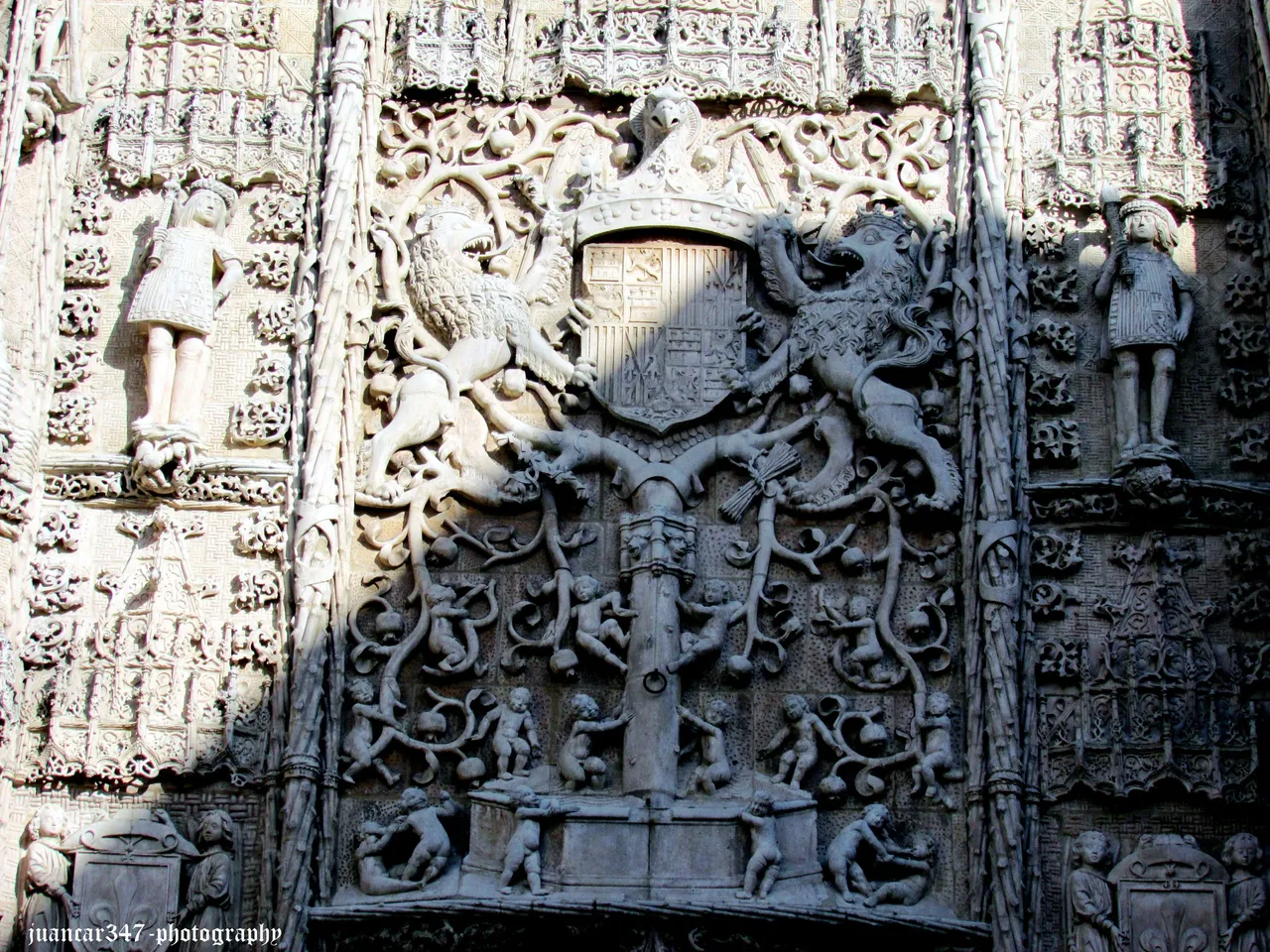
Valladolid, a city of Old Castile, regal as they come, was not only a monumental square, whose luxurious palaces gave birth to renowned Spanish monarchs -such as the emblematic Palacio de Pimentel, where King Felipe II was born on May 21, 1527- or period buildings where artists of the stature of Alonso González Berruguete transformed their dreams into immortal beauty, but also, it is on its site -little or nothing matters, whether imperial or commoner- where at least two masterpieces of this architecture, which is worth knowing and that is no other, than the facades of the church of San Pablo and its annex, the Colegio de San Gregorio, which at the time of its creation, were part of a convent of Dominican monks.
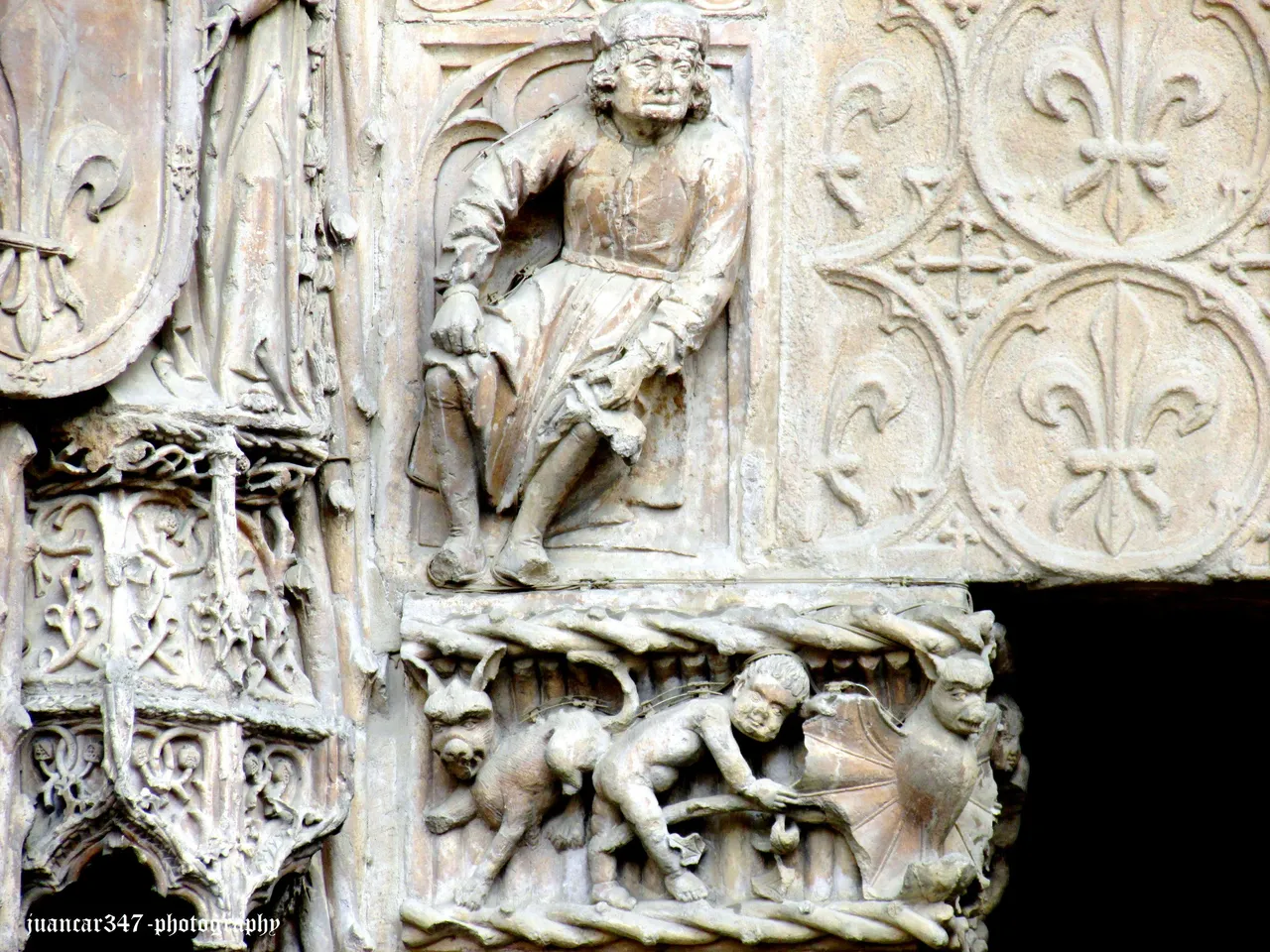
Leaving the church of San Pablo for a better occasion, in this post I will focus my attention on the main portal of the Colegio de San Gregorio, which currently serves as the glorious access to the National Museum of Sculpture in Valladolid.
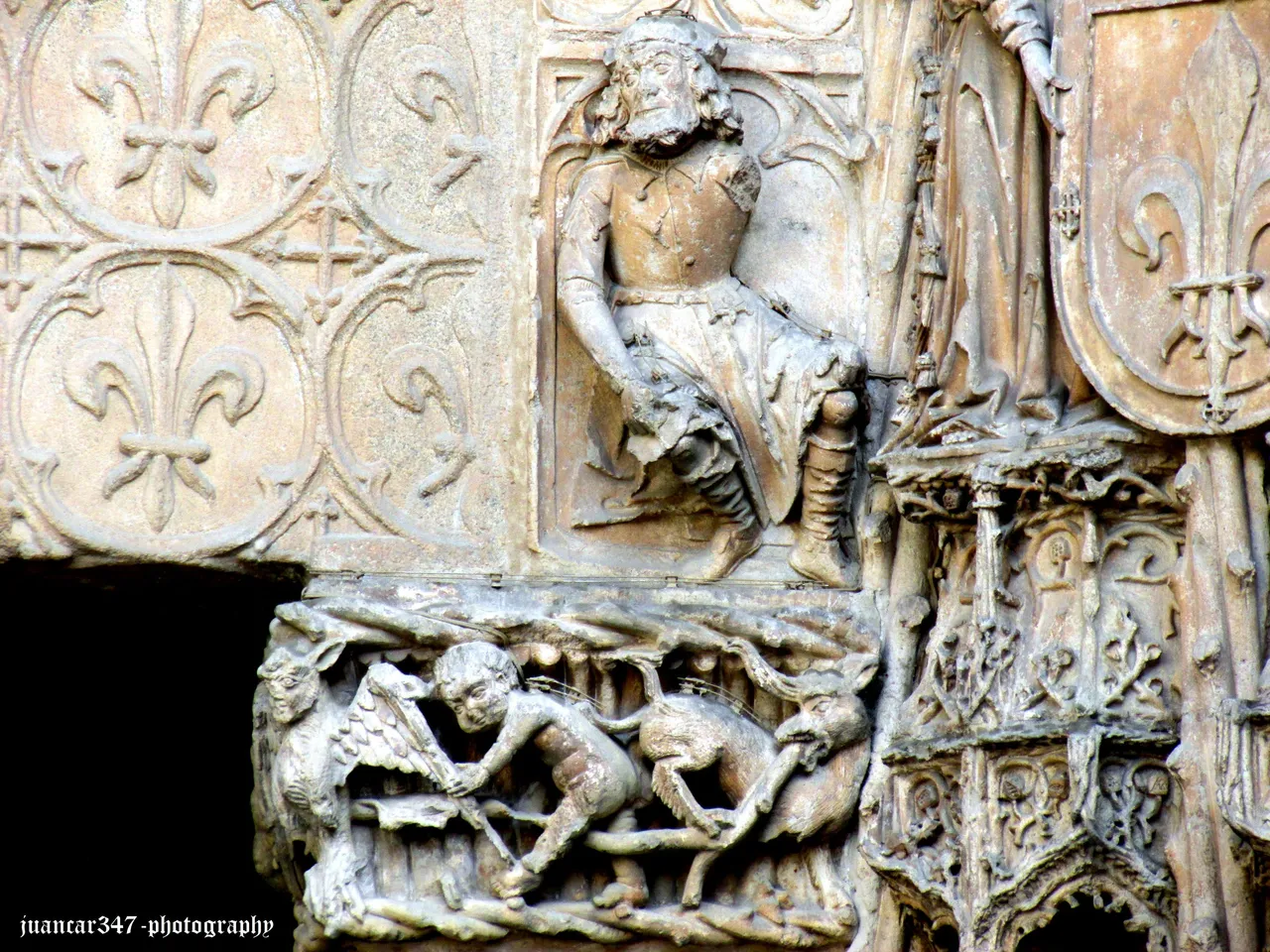
Focusing, then, on it and considering more carefully the design and the symbolism, than the architecture itself - which, on the other hand, has undergone so many and such important modifications throughout history, that its original originality could be supposed to barely shine through. its absence- we can come to suppose that in front of us we have one of those works of art, which by itself and after a while of looking at it, could affect us, due to an excess of information, with the famous Stendhal syndrome.

On the other hand, and although there is evidence that the creation of the Colegio de San Gregorio was thanks to the work of the Dominican Alonso de Burgos -who was not in vain, Bishop of Palencia and also confessor to the Catholic Monarchs- in relation to the authorship of its cover, no historical documentation has been found so far that could reveal the mystery about the artist or the workshop that carried it out, although, either due to similarities or because deep down it is of tourist interest to revalue some works, attributing them to artists of weight and relevance -a good example of this is found in the works of Hyeronimus Bosch, el Bosco, and how some initial erroneous attributions caused the value of the works in certain European museums to plummet- as in this case, it tends to be done, considering the possibility that it was made by Gil de Siloé and his workshop.
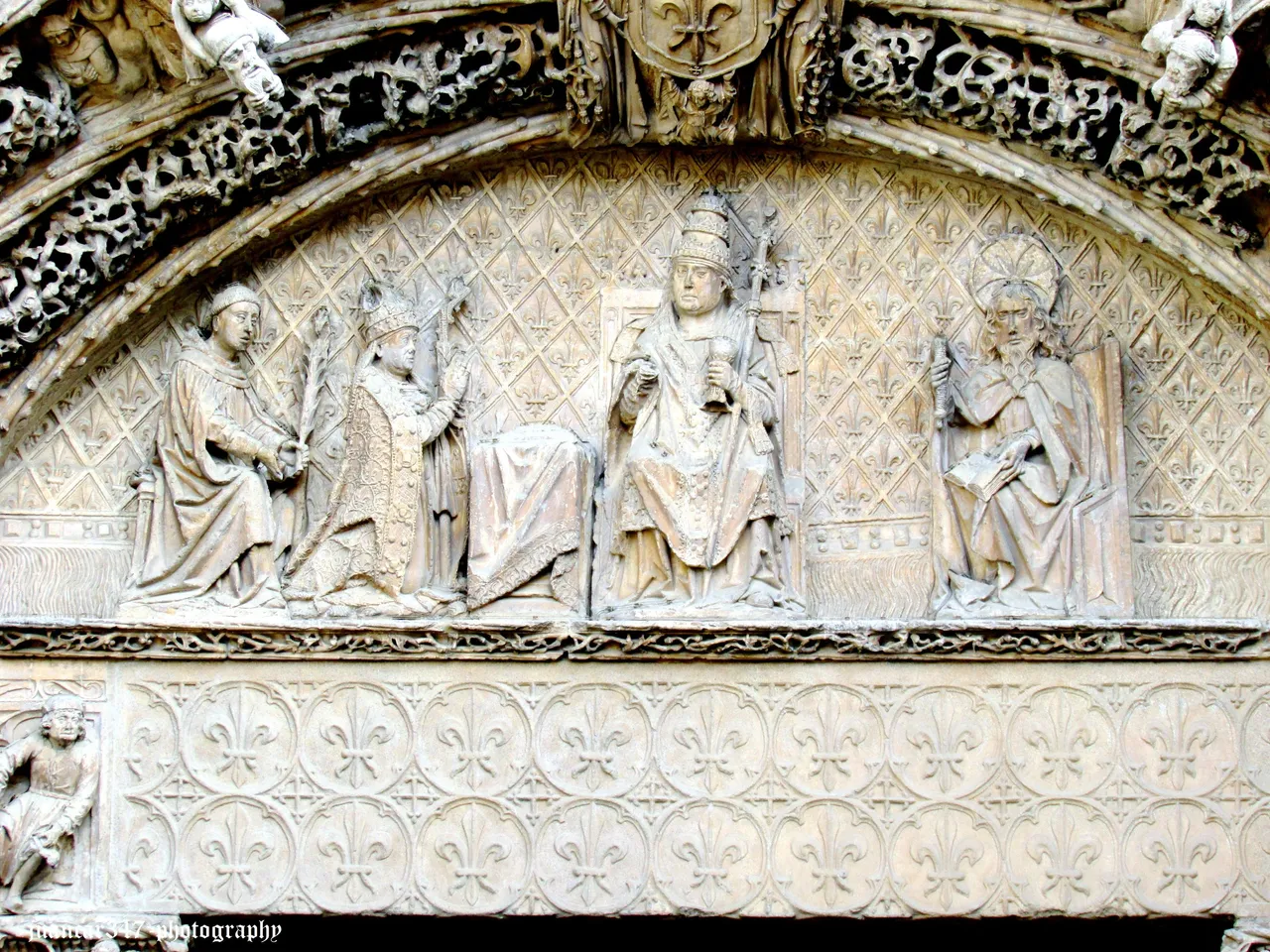
Regardless of this, we see a cover in which many of its elements strongly attract our attention and that I will try to comment on briefly, so as not to waste your time, more than necessary: the figures of the capitals, which as a Atlantean-statues are distributed at both ends of the main entrance door and represent royal figures, made in the manner of the famous 'wild men', which would not indicate, beyond other esoteric speculations that are irrelevant, more than a reference to the antiquity of the lineages, both noble and royal, that marked the time before the arrival of the unifiers Isabel and Fernando, a detail that possibly coincides with the strange face, triface, that crowns the top of the tympanum and in which You can see, perhaps, a reference to the past, the present and the future, possibly in relation to the survival of the monarchy, eternal, as was thought at the time.
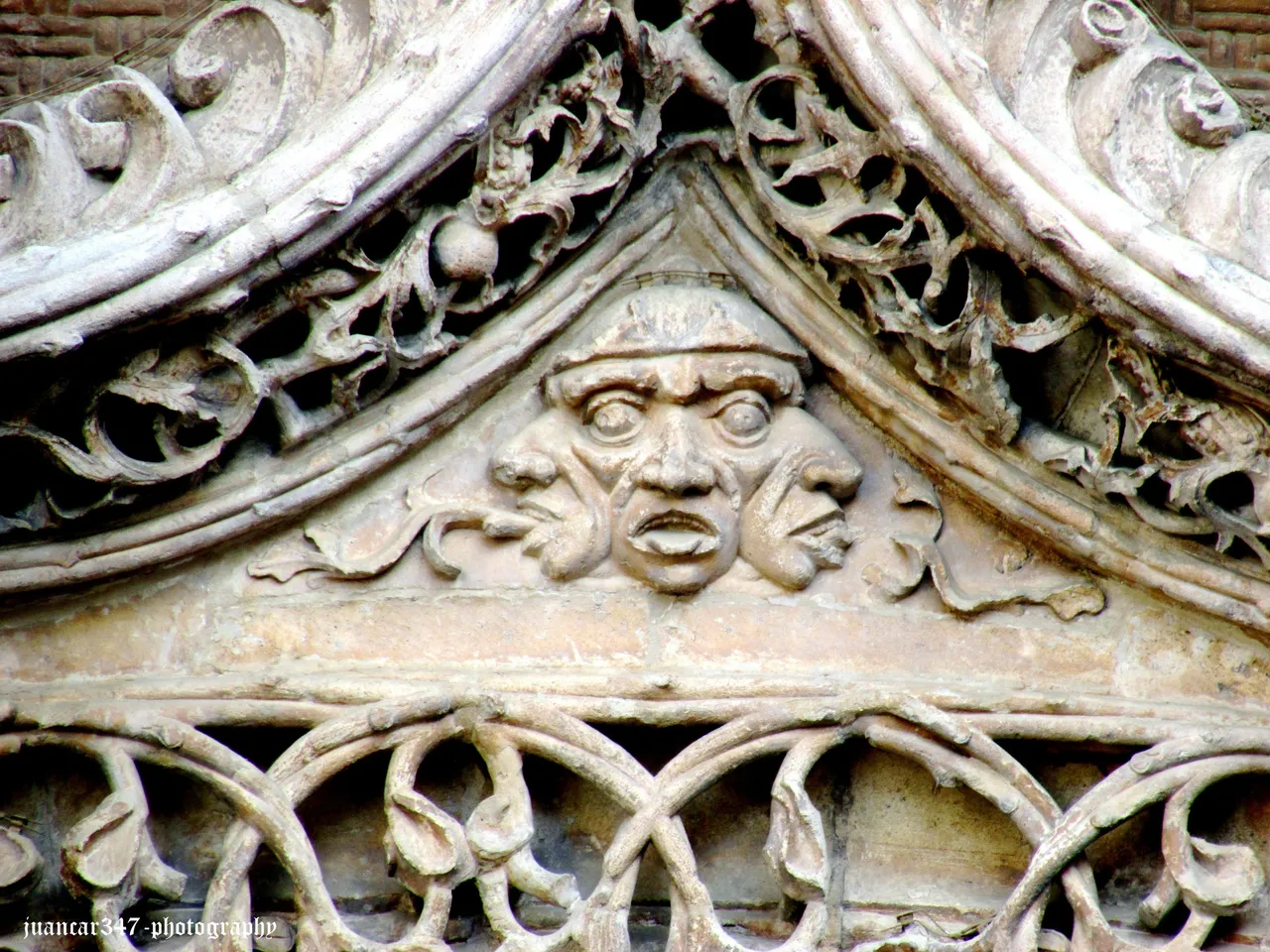
Above them, occupying the space intended for the tympanum, we see Saint Gregory himself represented, endorsed by Saint Paul himself and by Saint Dominic, that of Guzmán, the one born in the Burgos town of Caleruega -in whose church, dedicated to him , the Romanesque font where he was baptized is still preserved - and above it, an immense tree -perhaps, by way of comparison, with the Vine or Tree of Jessé, from which Jesus Christ descended- crowned by the coat of arms of the Catholic Monarchs , outstanding of the whole set and that later, at the time of Carlos I of Spain and V of Germany, would become the imperial coat of arms.
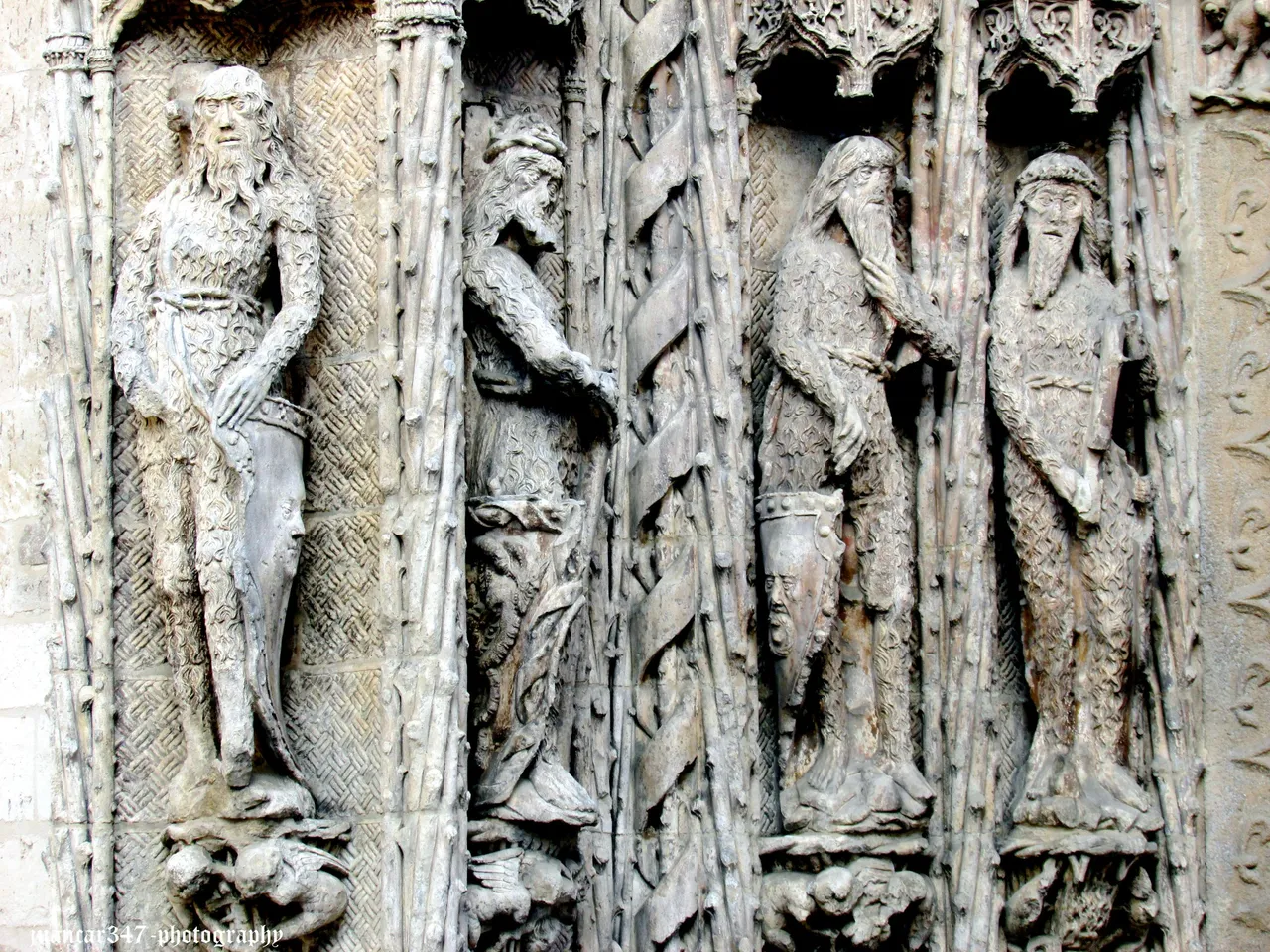
Another shield, much smaller, supported by angels and that appears on several occasions, with a fleur-de-lys or lily in its center -a Marian symbol, among others- historians assume that it belongs to Alonso de Burgos himself, founder of the College.
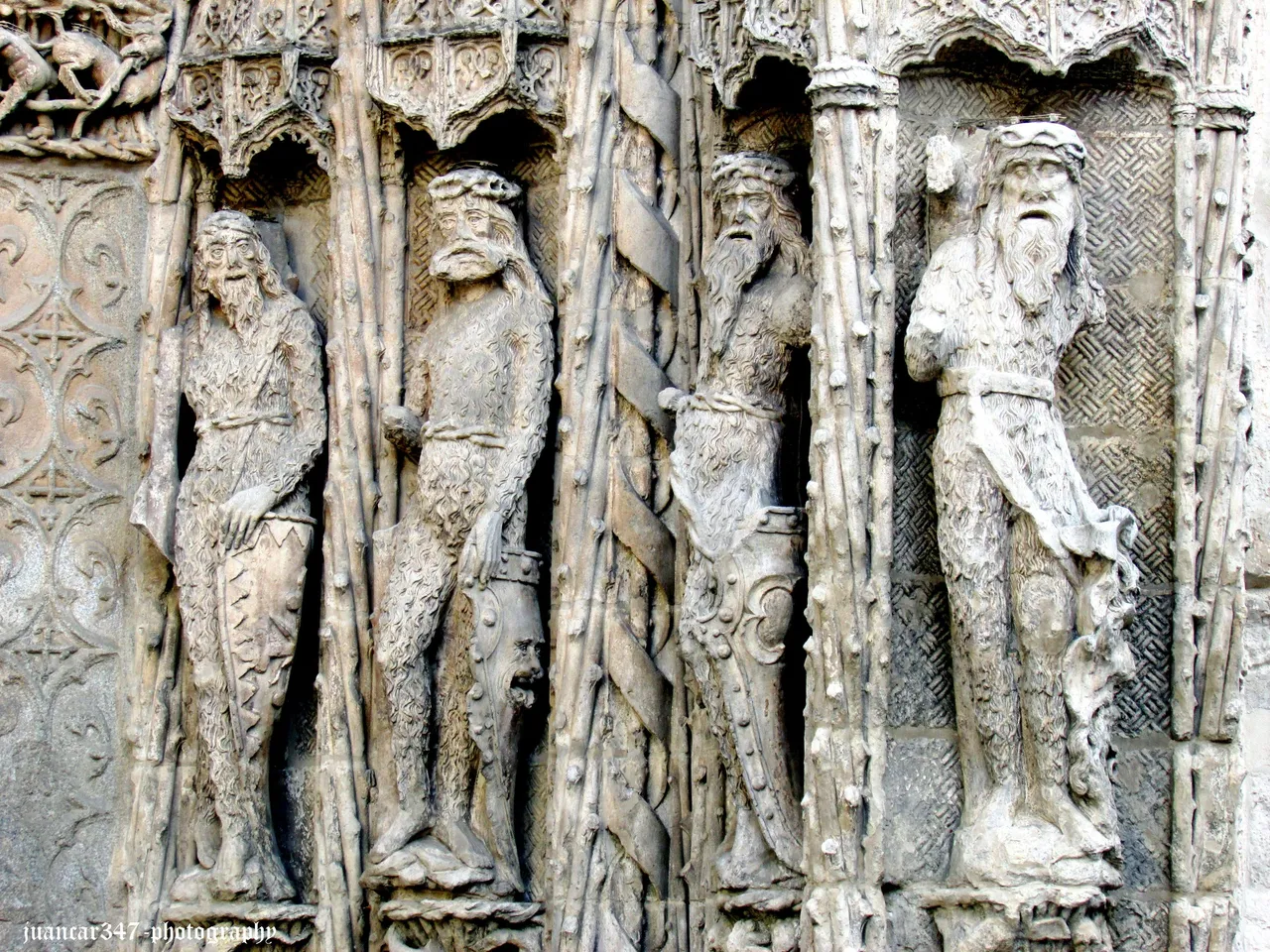
NOTICE: Both the text and the accompanying photographs are my exclusive intellectual property and therefore are subject to my Copyright.

